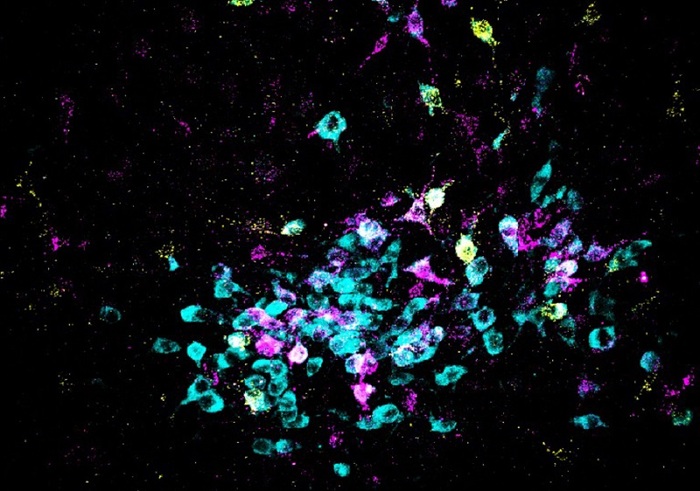Many of the traits that define us—such as the language we speak and the way we relate to others—can be traced, at least in part, to our earliest experiences. Although our brain is malleable throughout life, most neuroscientists agree that the changes that occur in the womb and in the first years of life are the most important, since they greatly influence the risk of psychiatric and developmental disorders.
"Early in life, the brain is still forming," says Claudia Lugo-Candelas, a clinical psychologist at Columbia University and co-author of a study on the prenatal origins of psychiatric illness published in the Annual Review of Clinical Psychology. Starting from a tiny group of stem cells, the brain becomes a complex organ of some 100 billion neurons and trillions of connections in just nine months. Compared to more subtle brain changes that occur later in life, Lugo-Candelas says, what happens in the womb and shortly after birth "is like building the house, as opposed to just finishing the terrace."
Learn moreIt's not your kids, it's not your boss; it's the system. This is how parental burnout is generated
But exactly how this process unfolds and why it sometimes twists has been a difficult mystery to decipher, largely because many of the key events are difficult to observe. The first MRI scans of infant and fetal brains were taken in the early 1980s, and doctors took advantage of this tool to diagnose major malformations in brain structure. But neuroimaging tools that can capture in detail the inner workings of the baby's brain and spy on fetal brain activity in pregnant mothers are much more recent developments. Today, this research, along with long-term studies that follow thousands of children for years, offers scientists new insights into brain development.
These advances have propelled researchers into a different phase than they were even five years ago, says Damien Fair, a neuroscientist at the University of Minnesota who studies developmental disorders such as autism and attention deficit hyperactivity disorder (ADHD).
Until recently, one of the main problems was that, unlike adults, fetuses and newborns did not sit still in brain scans. Driven by amniotic fluid, the fetus constantly changes position, and newborns love to squirm to observe their surroundings. In the past, researchers and doctors had to perform several expensive and time-consuming scans to get a good picture. Sometimes children and pregnant mothers were sedated to reduce movement, a method that alters brain function and can pose health risks.
But new computer and imaging techniques that reduce distortions caused by movement — including software developed by a company co-founded by Fair — have made it easier to obtain data from babies and fetuses. And that has revitalized the field of study.
A Look at Prenatal Brain Development
New work is beginning to reveal what typical brain development looks like and hint at how atypical disorders such as autism and ADHD can arise. In a groundbreaking 2017 study, for example, a team of researchers led by pediatric neuroscientist Moriah Thomason, now at New York University, used functional magnetic resonance imaging to investigate neural communication patterns between the brain regions of 32 fetuses. Half of the pregnant women were at high risk of preterm birth and 14 of the babies ended up being born prematurely.
Preterm birth is a known risk factor for later cognitive and emotional problems. But scientists have found it difficult to determine whether it's due to preterm birth trauma, which often involves brain injury and oxygen deprivation, or pre-existing brain differences that begin in the womb.
Thomason's study provided the first evidence that problems start in the womb.
An MRI shows MIT neuroscientist Rebecca Saxe kissing her two-month-old son. REBECCA SAXE, BEN DEEN AND ATSUSHI TAKAHASHI. DEPARTMENT OF COGNITIVE AND BRAIN SCIENCES, MIT. ATHINOULA A. MARTINOS IMAGING CENTER AT MIT'S MCGOVERN BRAIN RESEARCH INSTITUTE
When they were fetuses, the future preemies scanned by his team had brain activity that suggested weaker communication between various brain regions compared to full-term fetuses. Most surprisingly, the scientists detected an alteration of neural communication in networks that will eventually become relevant to language, including a language center on the left side of the brain.
Since then, researchers have found more evidence of prenatal brain alterations in premature babies. In 2021, for example, another group found that 24 babies born prematurely had lower brain volume and less cerebrospinal fluid when they were still in the womb, compared to a group of full-term babies. And several studies have found that women who give birth prematurely have high levels of inflammation caused by bacterial or viral infections in the amniotic fluid and placental tissues.
The findings add to growing evidence that inflammatory events during pregnancy can alter fetal brain development. Studies of large populations, for example, have shown that mothers who have suffered a severe infection during pregnancy have a slightly higher risk of having an autistic child, although it is not yet clear that prenatal infection alone can cause autism.
Lugo-Candelas' research focuses on how a pregnant woman's perceived stress, life events, depression and anxiety can affect early brain development. Several studies have found that a high level of maternal anxiety and depression during pregnancy is associated with a two-fold increased risk of the child developing a mental disorder later in life. If the risks start earlier in development, "that also means that there is a possibility of intervening earlier than we thought," says the expert. However, Lugo-Candelas adds, scientists are still working to unravel the mechanisms underlying that increased risk, which stressors may have the greatest impact, and when and how to intervene.
Plus, like many other risk factors in pregnancy, there's no single thing that causes psychiatric illness or developmental problems, Lugo-Candelas says. "It's a set of small risks." He stresses that there is nothing rigidly deterministic about any of these early exposures or experiences. "You can have children prenatally exposed to a bunch of things that we think might increase the risk of a psychiatric illness, and then have a child who doesn't have any disorders and never will."
This complexity reflects one of the biggest challenges of studying the developing brain: the fact that similar outcomes, such as autism or schizophrenia, can have many underlying neurological causes. For example, some people with autism have greater connectivity between certain brain regions than the neurotypical population, but others have less. There is no single neural pattern for this condition.
Brain connections as 'neural fingerprints'
Fair has addressed this problem by identifying what he calls "functional fingerprints" — patterns unique to each individual in the way different brain regions communicate with each other when a person is at rest inside an MRI scanner.
In 2014 he first observed these neural fingerprints in adults and then showed that children also have them. Fair and his team found that patterns are surprisingly consistent within families, even across generations, suggesting that certain types of brain connectivity are at least partially inherited.
Last year he published evidence that even eight-month-old babies have these neural fingerprints, and that certain elements of the footprint, such as the amount of crosstalk between regions involved in functions such as attention and movement, can predict a baby's exact age, up to a few months.
Meanwhile, functional magnetic resonance imaging studies of the fetal brain by Thomason suggest that these distinct connectivity patterns emerge in the second and third trimesters, even in neural circuits that end up governing learning, memory, and emotion. Thomason and other researchers are studying neuroimaging how various prenatal experiences — from maternal exposure to covid to cannabis use — affect the development of these circuits.
The fact that scientists can detect these patterns of brain activity so early suggests to Fair and others that much of what makes us who we are is already in place by the time we are born, even though we will continue to be shaped by our experiences and exposures throughout life. However, since each baby's brain is determined by so many different factors, researchers are going to need long-term imaging data from thousands of children to gain a solid understanding of what "typical" development looks like, Fair and colleagues write in the 2021 edition of the Annual Review of Developmental Psychology.
Over time, imaging tools could help doctors and researchers monitor a baby's brain development, spot signs of future problems, and develop earlier personalized interventions and treatments for conditions such as autism, Fair adds.
In the meantime, Lugo-Candelas believes we already know enough to act. "I am confident that interventions that effectively minimize distress during pregnancy, such as paid maternity leave, will be beneficial to the next generation," she says. He notes that that could lead to better outcomes in school and in other areas, such as mental health, that extend across the lifespan. "I don't think we've done a good job yet measuring what those outcomes look like or the mechanisms that lead to them."
Article translated by Debbie Ponchner.
This article originally appeared in Knowable Magacine en español, a non-profit publication dedicated to making scientific knowledge available to everyone.
You can follow EL PAÍS Salud y Bienestar on Facebook, Twitter and Instagram.









